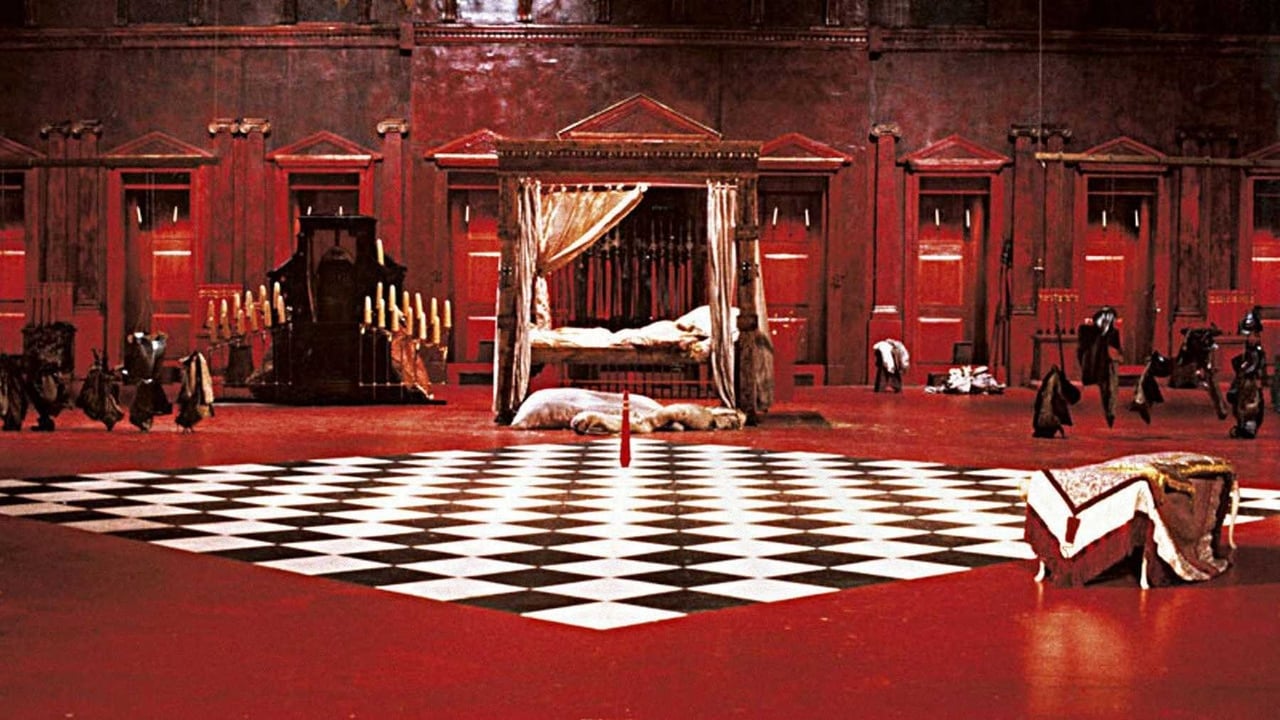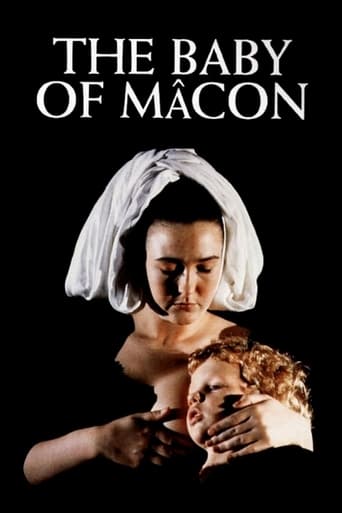

Clever and entertaining enough to recommend even to members of the 1%
... View MoreAlthough I seem to have had higher expectations than I thought, the movie is super entertaining.
... View MoreExcellent and certainly provocative... If nothing else, the film is a real conversation starter.
... View MoreThis movie feels like it was made purely to piss off people who want good shows
... View MoreIs it possible that "Peter Greenaway" is really a pseudonym for two people? One of them directs entertaining, imaginative films that have remained in my memory, and that I have eagerly watched two or three times. I am thinking of examples such as "The Draughtsman's Contract", and "Prospero's Books". I have seen these movies in cinemas, and later on video, and enjoyed them immensely. The other person is a would-be shocker who fails to shock, and who clearly spends an enormous amount of time, energy and money on brightly-co loured, predictable and tiresome films such as "A Zed and Two Noughts", "The Cook, the Thief . . ." and "Drowning By Numbers". I have managed (only just) to watch these on video, where I was able to fast-forward through the most boring sections. "The Baby of Macon" was obviously the work of this second individual. Admittedly, he did achieve two remarkable things. First, he somehow persuaded competent, well-known actors to participate in this trash, and second, he presented a potentially appalling act, a mass rape, as long-winded, repetitive and tedious.To sum up: an utter waste of money, talent and film stock.
... View MoreThis film was shown at the Cannes film festival nearly a decade ago and apparently received more walkouts than any film in the festival's history--and "Wild at Heart" won the grand prize here?Unlike most films that use sex and violence to help sell them, Greenaway seems to have no interest in "selling". The story he tells--which takes the form of a play attended by royalty and commonfolk alike--is a Shakespearian fable regarding a young woman (Julia Ormond) who uses her disfigured mother's newborn as a messiah-like figure to gain wealth and comfort, much to the dismay of the church (repped by Ralph Fiennes).To say that the writer/director of this film is a sick person because of what happens in the story is shortsighted, at best. Yes, there are truly heinous atrocities committed by some of these characters--but the manner in which it is depicted does nothing to suggest glamour or vicarious thrills. David Lynch's Golden Palm winner, on the other hand, is full of all manner of freaks and malicious acts played mostly for laughs. Greenaway definitely got the soiled end of the stick on this one.It's a shame, too. This film recently played for just a few nights in one of Chicago's most prominent art theaters. It's never received anything remotely close to a nationwide theatrical or video release, and it's my favorite Greenaway film, second only to "The Cook, the Thief...". If one is interested in this sort of experience and has a fairly strong stomach, I'd recommend a theatrical screening in a minute.
... View MoreI first made Peter Greenaway my "acquaintance" through "Prospero's Books," an equally beautiful and equally compelling film. I have also seen some minor pictures of his, like "The Belly of an Architect" and "Drowning by Numbers" which cannot really live up to the image of "The Baby of Macon." Personally, I believe it is Greenaway's best. It is a play, a performance, where shape-shifting is as spontaneous as breathing, indicating that the world is, at it were, a theater, and we the people are merely actors. "The Baby of Macon" is the tale of the exploitation of a child for profit. A beautiful healthy son is born into a poor family, in a time of plague and bareness, in the old Gothic city of Macon. The child is seen as a mere toy, an opportunity for gain, both by his unnamed sister (so beautifully played by Julia Ormond) and the Church. The sacred Child, identified with Christ, brings riches and prosperity and fruitfulness unto the wretched crowds who live in Macon. But his sister's over-weening ambitiousness and the Church's avarice worsen the matters. The Child is immolated and all is lost. The masque is shown on stage in a doric playhouse in 1650 AD, before the viewers whose desire for pious histrionics is forceful. In due time you cannot possibly tell whether this play is acted or merely actual. You cannot tell whether or not you are in a playhouse or in a Cathedral, or whether this wondrous baby represents an earlier Miracle, born by Virgin Birth in a Nativity in the presence of ox and ass. At the play's apogee you cannot be sure who are the players and who are the viewers. This is Peter Greenaway's most shocking film, a somber "miracle-play" of wonders, semi-wonders, and would-be wonders conceived in an epoch of veritable godliness, but performed in a Baroque era of Religiousness when the fancy is starving for various feelings.
... View MoreSpoilers herein.For art to be real, worthwhile, it has to be more than a mere political statement. It has to be `open,' producing rewards beyond what the artist might have had in mind. Greenaway is the richest artist working in film and this film has bottomless rewards.The key dimension here is exploitive mercantilism: the irresistibility of the personality, expectant generation of miracles, and the engineering of these for profit. In other words, theater to support power.The key presentational mechanism is an incredibly deep self-referential nesting. Paintings within a play within a play within a movie, all shuffled. The Church is both within and without as is the power base of the artists and Medici scion. There is a phenomenal, long tracking shot during the rape that deliberately weaves through all these layers, following the main threads of the tapestry. It incidentally includes a disturbing scene; the effect is to give us no them-us boundary to retreat behind.As we watch and deconstruct this, so do the participants (whom we fancy we are better than) deconstruct the child. Every element, from disemboweling to some heavy disgust with priests, is beautiful.Any Greenaway project is an experience which impresses -- some are life-altering. This is great art in my opinion, but I prefer Greenaway projects that have broader ambition. This is like `Belly,' `Women' and `Draughtsman's' which each present a single metaphoric skeleton. The book (Pillow and Prospero) and counting projects (`Zed,' `Drowning,' `Falls') have fuller horizons. Where this is bottomless, those are bottomless in many directions.If you are looking for an `easy' beginning into Greenaway's imagination, this could be a good start.
... View More